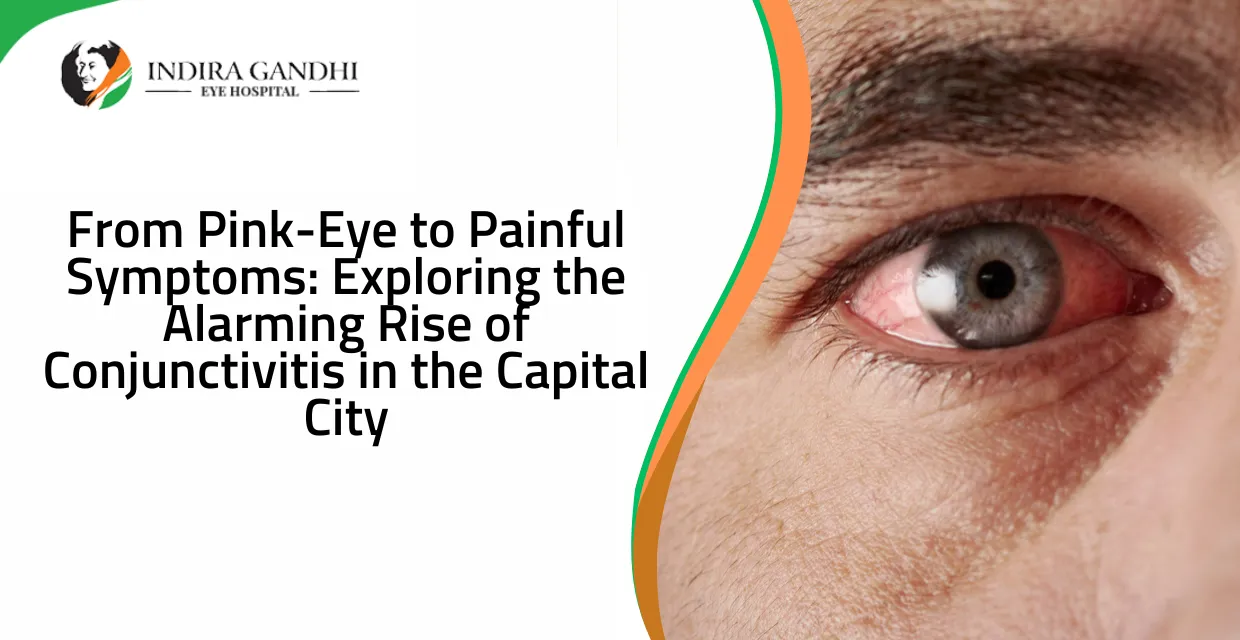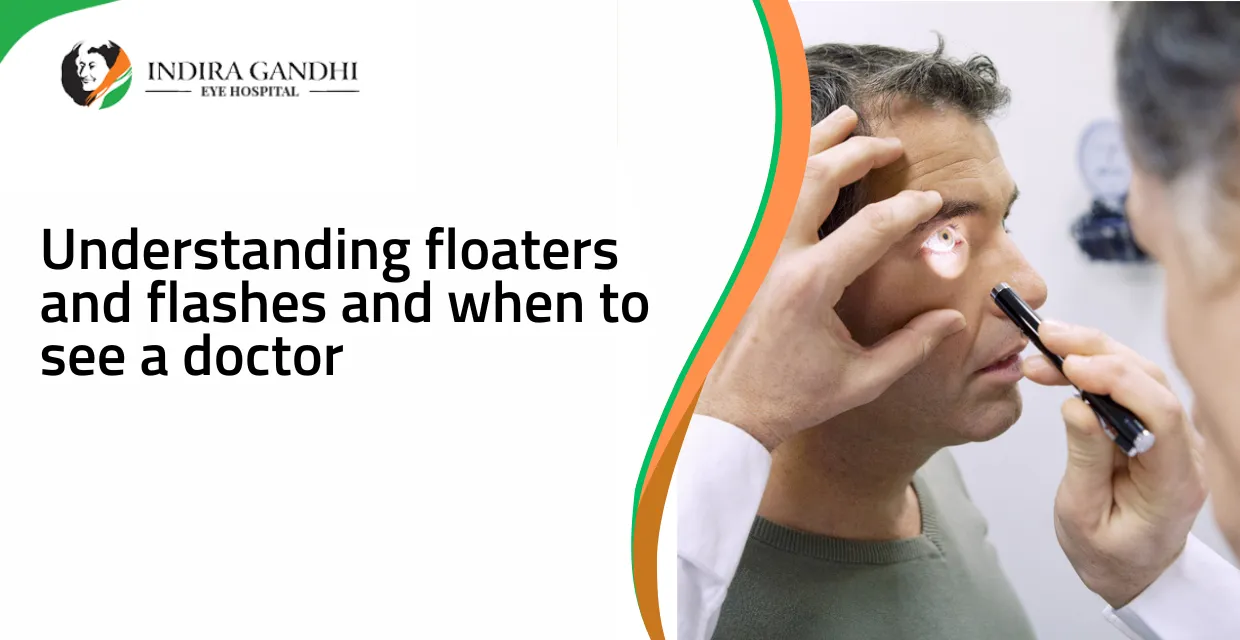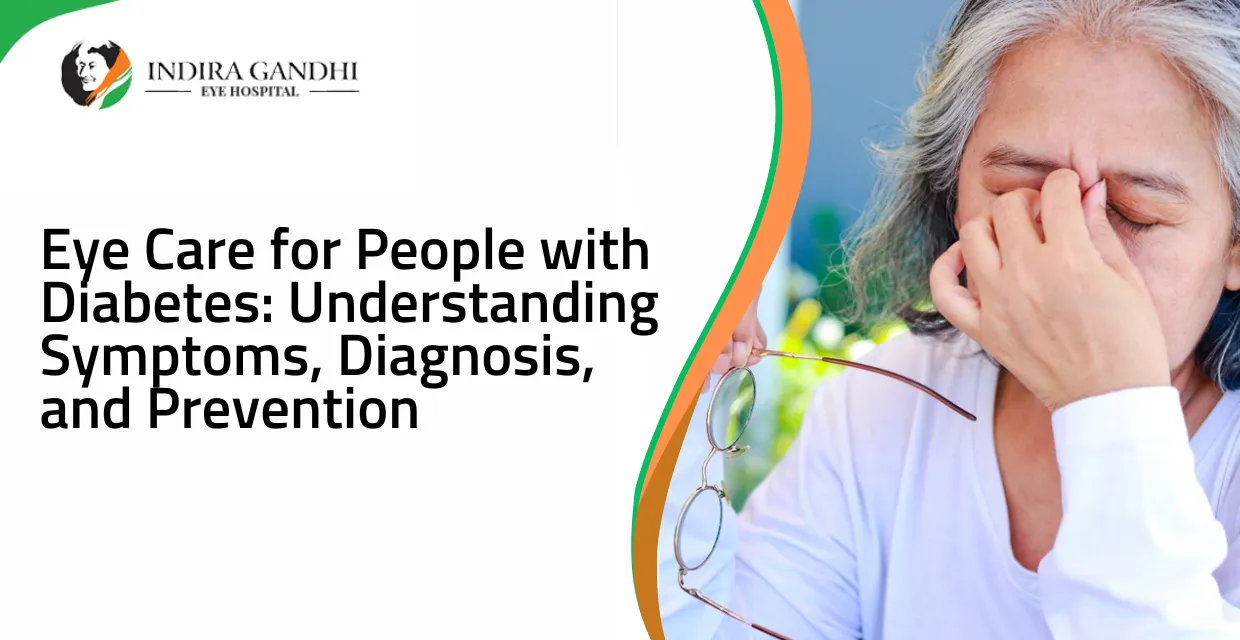Conjunctivitis, commonly known as pink eye, is a highly contagious eye infection that has been soaring in prevalence in the capital city. The dramatic surge in cases has raised concerns among health officials and residents. This article aims to delve into the various aspects of conjunctivitis, including causes, symptoms, diagnosis, and treatment options, while highlighting the role of Indira Gandhi Eye Hospital and Research Centre, the best eye hospital in India, in combating this alarming rise.
Introduction to Conjunctivitis and its Prevalence
Conjunctivitis is an inflammation of the conjunctiva, the thin clear tissue that covers the white part of the eye and lines the inner surface of the eyelid. It can be caused by viral, bacterial, allergic, or chemical factors. In the past year, the capital city has witnessed an exponential increase in the number of conjunctivitis cases, with individuals of all age groups being affected.
Causes of Conjunctivitis
Viral Conjunctivitis
Viral conjunctivitis, often associated with the common cold, is highly contagious. It is caused by a viral infection and spreads through contact with contaminated surfaces or direct contact with infected individuals.

Bacterial Conjunctivitis
Bacterial conjunctivitis, caused by bacteria such as Staphylococcus aureus or Streptococcus pneumoniae, is another common form of conjunctivitis. It can result from poor hygiene, sharing of personal items, or contact with contaminated objects.
Allergic Conjunctivitis
Allergic conjunctivitis occurs due to exposure to allergens like pollen, dust mites, or pet dander. It is typically characterized by itchy eyes, watery discharge, and a history of other allergic conditions.
Risk Factors for Conjunctivitis
Various factors increase the likelihood of developing conjunctivitis. These include:
Age
Children, older adults, and individuals with weakened immune systems are more susceptible to conjunctivitis.
Contact Lenses
Improper use, inadequate cleaning, or extended wear of contact lenses can lead to the development of conjunctivitis.
Poor Hygiene
Insufficient hand hygiene, especially before touching the eyes, can facilitate the transmission of conjunctivitis-causing microorganisms.
Allergies
Individuals with a history of allergies have a higher risk of developing allergic conjunctivitis.
Symptoms of Conjunctivitis
Conjunctivitis presents with several symptoms, which may vary depending on the underlying cause. Common signs and symptoms include:
Redness and Swelling
The conjunctiva becomes inflamed, giving the affected eye a red appearance. Swelling of the eyelids may also occur.
Itching and Discomfort
Persistent itching and discomfort, often accompanied by a gritty or sandy sensation, are common in conjunctivitis.
Excessive Tearing
Excessive tearing and watery discharge are frequently observed, leading to the need for frequent wiping or the use of tissues.
Sensitivity to Light
Many individuals with conjunctivitis experience sensitivity to light, known as photophobia. This sensitivity can cause discomfort and worsen the symptoms of conjunctivitis.
Diagnosis of Conjunctivitis
To diagnose conjunctivitis, healthcare professionals consider various factors and perform specific examinations. The diagnostic process may include:
Physical Examination
A thorough examination of the eye is conducted to assess the extent of redness, swelling, discharge, and other visible symptoms.
Laboratory Tests
In some cases, laboratory tests such as conjunctival swabs or cultures may be performed to identify the specific pathogen causing conjunctivitis. These tests are particularly useful in cases of suspected bacterial conjunctivitis.
Importance of Seeking Medical Attention
While mild cases of conjunctivitis often resolve without medical intervention, it is vital to seek medical attention if symptoms persist or worsen. A healthcare professional can accurately diagnose the underlying cause and provide appropriate treatment. Additionally, prompt medical attention helps prevent the spread of contagious conjunctivitis and ensures optimal recovery.
Indira Gandhi Eye Hospital and Research Centre and Research Centre: A Premier Eye Care Facility
When it comes to comprehensive eye care and treatment, Indira Gandhi Eye Hospital and Research Centre stands as the best eye hospital in India. With a commitment to excellence and patient-centric care, the hospital offers a wide range of services and boasts state-of-the-art facilities and technology. The hospital's team of experienced ophthalmologists and dedicated staff ensure the highest level of treatment and satisfaction for patients.
Expertise and Services Provided
The hospital offers a comprehensive range of eye care services, including diagnosis, treatment, and preventive measures for various eye conditions, including conjunctivitis. The team of highly skilled ophthalmologists specializes in the latest techniques and surgical procedures, ensuring optimal outcomes for patients.
State-of-the-art Facilities and Technology
Indira Gandhi Eye Hospital and Research Centre is equipped with cutting-edge technology and state-of-the-art facilities. From advanced diagnostic equipment to modern surgical tools, the hospital ensures the highest standards of care and precision in every aspect of eye treatment.
Focus on Patient Care and Satisfaction
At Indira Gandhi Eye Hospital and Research Centre, patient care and satisfaction are paramount. The hospital's dedicated staff strives to provide a warm and comforting environment, ensuring that patients feel at ease throughout their journey. The compassionate approach and personalized care contribute to an exceptional experience for patients seeking treatment for conjunctivitis or any other eye condition.
Conclusion
The alarming rise of conjunctivitis in the capital city necessitates increased awareness, timely diagnosis, and appropriate treatment. Indira Gandhi Eye Hospital and Research Centre, the best eye hospital in India, stands at the forefront of providing comprehensive eye care services, ensuring patient satisfaction, and contributing to the health and well-being of individuals affected by conjunctivitis. By understanding the causes, symptoms, and treatment options, we can effectively combat this widespread eye condition and promote better eye health within the community.
FAQs
Q: Can conjunctivitis be passed from person to person?
A: Yes, conjunctivitis can be highly contagious and easily transmitted through direct or indirect contact with infected individuals.
Q: Is it safe to wear contact lenses during conjunctivitis?
A: It is advisable to avoid wearing contact lenses until the conjunctivitis has cleared up. Contact lenses can increase the risk of infection and prolong the healing process.
Q: What precautions should be taken to prevent the spread of conjunctivitis?
A: To prevent the spread of conjunctivitis, it is crucial to practice good hygiene, such as washing hands frequently, avoiding touching or rubbing the eyes, and using separate towels or tissues.
Q: Can conjunctivitis cause long-term complications?
A: In most cases, conjunctivitis resolves without any long-term complications. However, severe or untreated cases can lead to corneal damage or other eye-related complications.
Q: How long does it take to recover from conjunctivitis?
A: The recovery time for conjunctivitis depends on its cause. Viral conjunctivitis may take up to two weeks to resolve, while bacterial conjunctivitis can be treated with antibiotics and may resolve within a few days with proper treatment.
Q: Can conjunctivitis recur?
A: Yes, conjunctivitis can recur, especially in cases of viral or allergic conjunctivitis. Taking preventive measures, such as avoiding triggers and maintaining good hygiene, can help reduce the recurrence.





